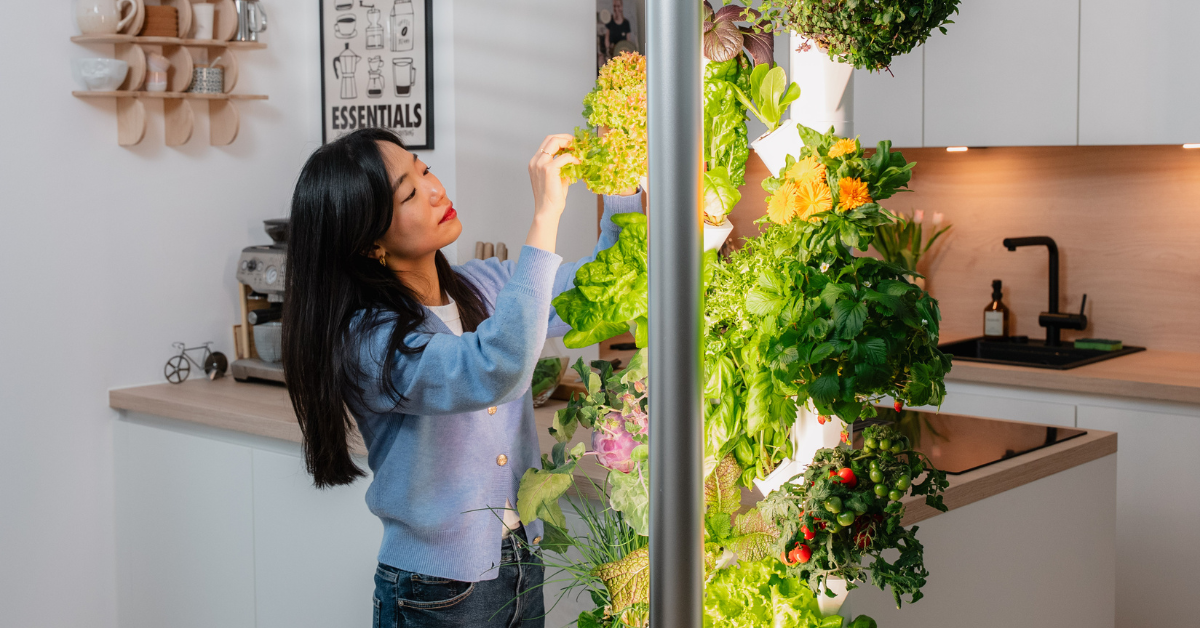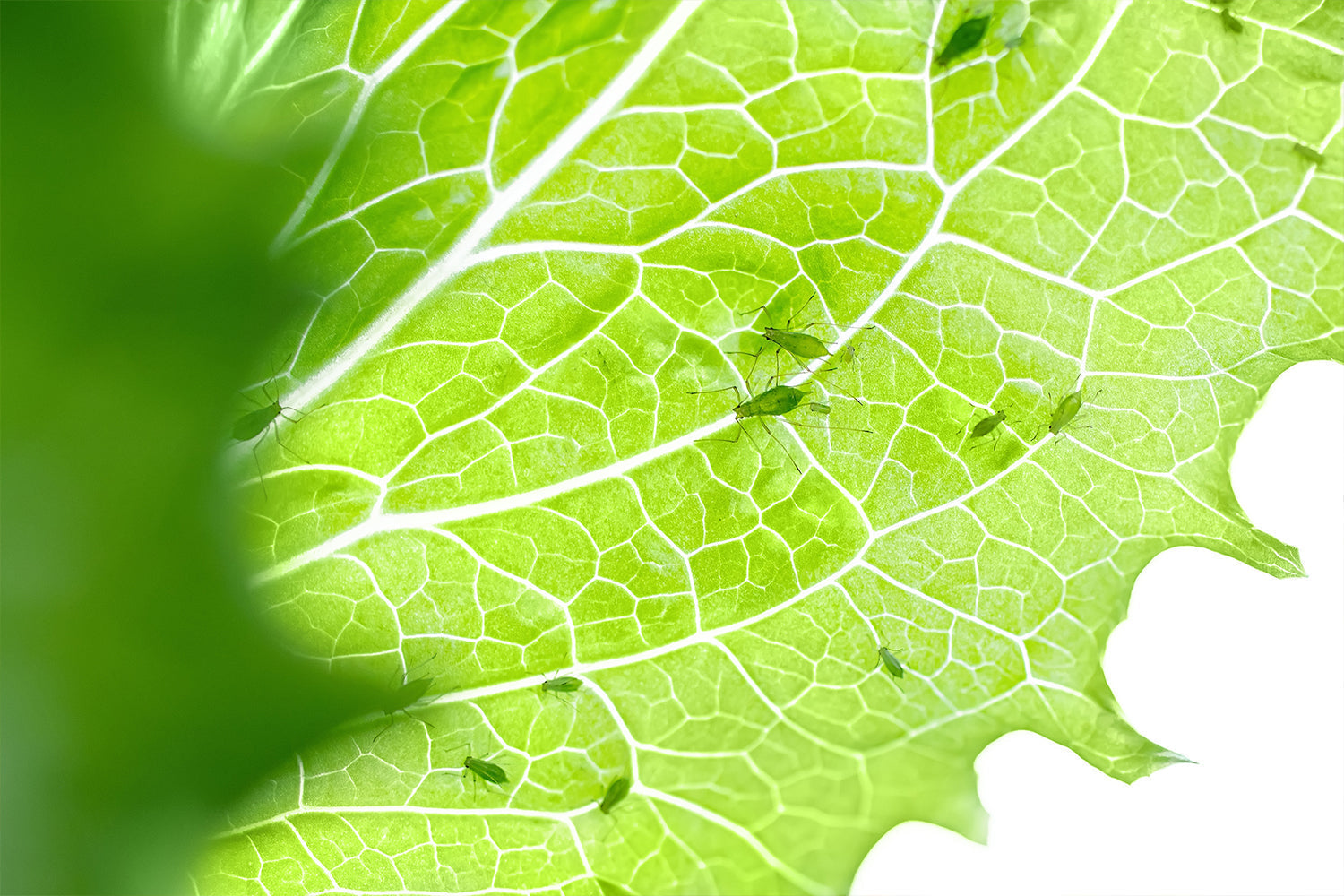To ensure your Everleaf Garden always shines in all its glory, it requires conscientious and regular care. We've put together a clear guide to help you keep your Everleaf Garden in top condition and allow your plants to thrive.
Weekly skincare routine (approx. 5 min.) :
-
Refill water: Ideally, fill to the "Max" mark and note how many liters of water have been added. For every liter of water added, mix in 4 ml each of plant nutrients A and B. Important: Never mix the two nutrients directly together. Always dissolve them separately in the water, otherwise they will clump. Then stir the water well.
Tip: It's best to get a larger watering can with a volume of 5 or 10 liters – this makes refilling the water much faster and more convenient. -
Measuring pH: Take a water sample using a pH test kit and measure the pH value. The optimal pH value is between 5 and 6.5. Adjust accordingly with pH reducer if the value deviates. Stir the water well before each measurement. Tip: As the plants absorb nutrients throughout the week (which have a slightly pH-lowering effect), the pH value gradually rises.
Therefore, we recommend initially setting it slightly lower – in the range of 5.0 to 5.5 (light orange). This way, it will remain within the ideal range even after a few days. -
Plant check: Inspect your plants for defects and pests. The sooner you notice problems, the sooner you can counteract them with simple measures. Remove dead leaves and trim or relocate plants as needed, especially if larger plants are shading smaller ones.
-
Root care :
➡️ Only necessary every two weeks for the following plants: arugula, celery, mustard greens, sunflowers, snack cucumbers, tomatoes
➡️ For all other plants, it is sufficient to trim the roots once a month as part of the monthly care routine.If the roots are already longer than about 10 cm, shorten them by about 1/3 so they don't clog the irrigation system. Be careful not to remove more than a third of the roots to avoid hindering plant growth.
To ensure that the plant fits back into its hole, it is helpful to keep root growth lean and to completely shorten any roots growing laterally.
Monthly skincare routine (recommended - approx. 10-15 min.) :
Tip: Cleaning is easiest if you do it monthly. If you wait several months, deposits can become more stubborn – but you can still remove them easily with citric acid.
A monthly water change also helps maintain the nutrient balance in the water. This is because each plant extracts different amounts of nutrients from the water, which can lead to deficiencies of certain nutrients over time. Therefore, it is all the more important to be precise when adding nutrients and always replenish the correct amount.
-
Unplug the power supply: Always unplug the power supply first and carefully place the Everleaf Garden upright on a towel.
-
Clean the container: Empty the remaining water (or use it for watering other plants), clean the container with water and a little dish soap or citric acid, and fill it with fresh tap water up to the "Max" mark (20 liters). Add the plant food according to the initial dose (2 ml per liter of water from A and B).
-
Adjusting the pH value: After filling, check the pH value and adjust it with pH minus if necessary. Stir the water well before each measurement.
-
Plug in the power supply: Place the Everleaf Garden back onto the water reservoir and plug in the power supply again.
-
Finally: Don't forget root care and plant checks as part of your weekly routine.
Regular deep cleaning:
If, despite your monthly maintenance routine, your Everleaf Garden becomes dirty over time or root debris accumulates in the columns, it's time for a thorough cleaning. The growth of germs and bacteria in your indoor garden can attract pests and harm your plants. Therefore, it's crucial to properly clean your Everleaf Garden regularly. You can find out exactly how to do this here .
Tip for a longer-lasting clean indoor garden (for advanced gardeners):
Keep your indoor garden free of debris for longer, while simultaneously promoting root health and preventing disease – all with the help of hydrogen peroxide. An effective tip that you can easily integrate into your plant care routine!
To use this miracle cure, simply add 1-2 ml of 3% hydrogen peroxide per liter of fresh water to your water container once a week. Make sure to use stabilized (food-grade) hydrogen peroxide , as it won't dissolve quickly. However, only start using hydrogen peroxide once your plants have reached a certain size, as seedlings are particularly sensitive to it.
Important to know: Hydrogen peroxide also temporarily lowers the pH value of the water. However, this effect disappears after about 24 hours. Therefore, you should always first adjust the pH value correctly with pH Minus and only then add the hydrogen peroxide. This ensures that your plants grow in an optimal environment throughout the entire week.
And remember: less is often more. Too much hydrogen peroxide can do more harm than good to your plants. With the right dosage, your indoor garden will stay clean, healthy, and full of energy. Try it out and observe the positive changes!



